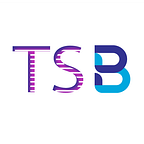Proof of Authority or PoA in Blockchain (Part 11- Blockchain Series)
Welcome to the 11th part of the 100 part series on Blockchain.
Previous parts: Part 1, Part 2, Part 3, Part 4, Part 5, Part 6, Part 7, Part 8, Part 9, and Part 10
Blockchains can be divided into permissionless and permissioned. Unlike permissionless Blockchain, where anyone can become a node, in the permissioned Blockchain, all nodes are pre-selected. One of the types of consensus mechanisms used in permissioned Blockchains is Proof of Authority, abbreviated as PoA. It is also a variant of the Proof of Stake consensus mechanism where instead of coins, the network users stake their identity and reputation. This means that, unlike POW and POS consensus mechanisms, where anyone can join without disclosing their identities, users in PoA systems are known entities that put their reputations at stake. In addition, richer nodes with high processing computers (POW) and higher stakes (POS) do not have more advantages than other nodes in the system.
As the network using the PoA consensus stakes identity, therefore, users wishing to participate in consensus need to disclose their identity voluntarily. Furthermore, if the user is found to be performing malicious activity on the network, it causes reputational harm to them.
Quote
“It takes twenty years to build a reputation and five minutes to ruin it. If you think about that, you’ll do things differently.” — Warren Buffet
The users in PoA systems are called validators that operate validating nodes to validate the blocks and add them to the Blockchain. Therefore, the validators that are considered to be trustworthy are allowed to participate in achieving the consensus.
How to establish authority?
To be elected as a validator, a candidate should comply with the following conditions:
(i) It should not be easy to obtain the right to be elected as a validator. A potential validator is required to obtain a valid notarial license because the notary data is publicly available. In addition, the notary license attests to the absence of a criminal record and a candidate’s good moral standard.
(ii) The identity must be formally verified on the network with the possibility of cross-checking the information in a public domain.
(iii) There should be complete uniformity in the checks and procedures for establishing authority.
(iv) In order to ensure honest validators and the integrity of the Blockchain, the identity of the selected validators must be periodically verified.
Thus, PoA using Blockchains is secured by the validating nodes that are randomly chosen to serve as trustworthy entities. It uses a limited number of block validators, about 25 or so validators, making the system highly scalable.
How does PoA work?
(i) PoA based network is an automated process; it is not mandatory for the validator to constantly monitor their computers/validating nodes. However, the software is required to run to put transactions in the blocks.
(ii) The validator nodes are selected randomly. Out of the selected nodes, one validator node is the leader node that validates the transactions and creates a new block. A leader node can only sign one block in the round in its validation time.
Other selected validator nodes confirm the validity of the signed block, and then the block is added to the Blockchain. At each time interval, the leader role is passed to the next validating node from the list of validating nodes. PoA allows every selected validator node to have an equal opportunity to be assigned to produce blocks.
(iii) If the leader node misses generating a new block in the round, it will be marked ‘inactive’ by other honest nodes. An inactive node will be considered “active” once it creates a new block again.
(iv) If the validating node processes a malicious or fraudulent transaction, it can be banned or excluded from the list of validating nodes, thus causing reputational harm to its operating validator.
(v) So, the validators have an incentive to maintain the position that they received. To avoid spoiling their reputation, validators are motivated to maintain an honest transaction process. Thus, most users value their hard-earned role of a validator.
Advantages of PoA
(i) Like PoS, proof of authority requires minimal computational effort and does not need specialized equipment. Thus PoA platforms are incredibly cheap to run and maintain.
(ii) PoA system is based on a limited number of block validators; thus, it allows the network to reach consensus more quickly and therefore provides much faster processing of transactions than Proof of Work and Proof of Stake systems. The transactions are confirmed in less than 1 second. Because of this reason, PoA systems are more scalable.
Limitations of PoA
(i) PoA networks typically have a relatively small number of validating nodes. This makes a PoA network more centralized.
(ii) PoA networks typically accept entities with an established reputation as their validators, meaning attaining that role is typically out of reach for an ordinary person.
(iii) PoA is suitable only for enterprise applications as it requires users to trust validators, but it can not be used for public blockchains, as public blockchains aim to be trustless.
Blockchains using PoA
Vechain, Ethereum Express, PoA network, and Microsoft Azure
Applications of PoA
The PoA mechanism works best in a centralized way because of the small number of validators. It aims to make centralized systems better and more efficient. Thus, it is a practical, efficient solution for Blockchain networks, especially the private Blockchain where some level of trust and familiarity already exists among the members.
For instance, the PoA consensus mechanism may be applied in a variety of scenarios and is deemed a great option for logistical applications such as supply chains but can not be used in the crypto community. The faster speed of the PoA mechanism allows logistics operators to track any products in real-time for maximum efficiency of deliveries.
If you liked this article and want to know more about Blockchain, NFTs, Metaverse, and their applications, click the below link.
Happy learning!
